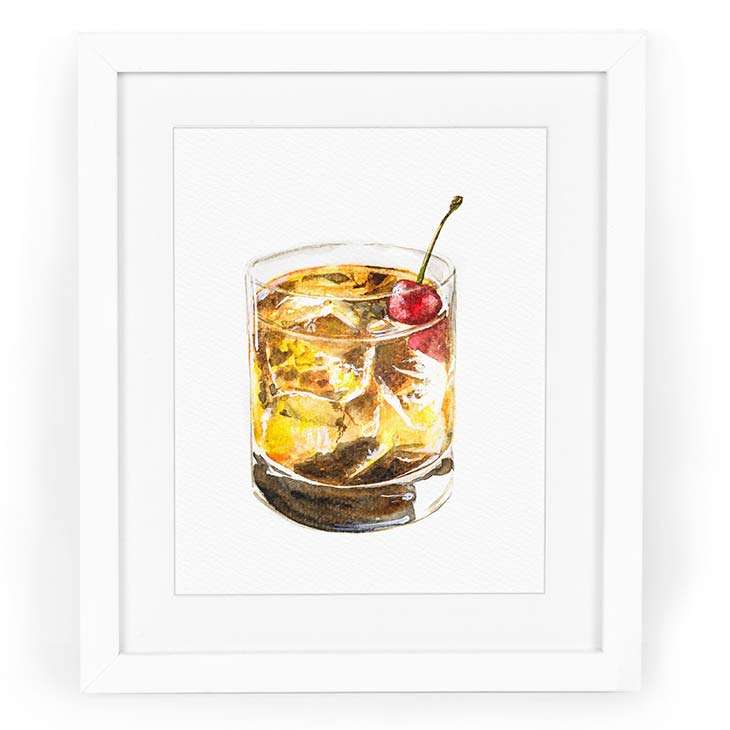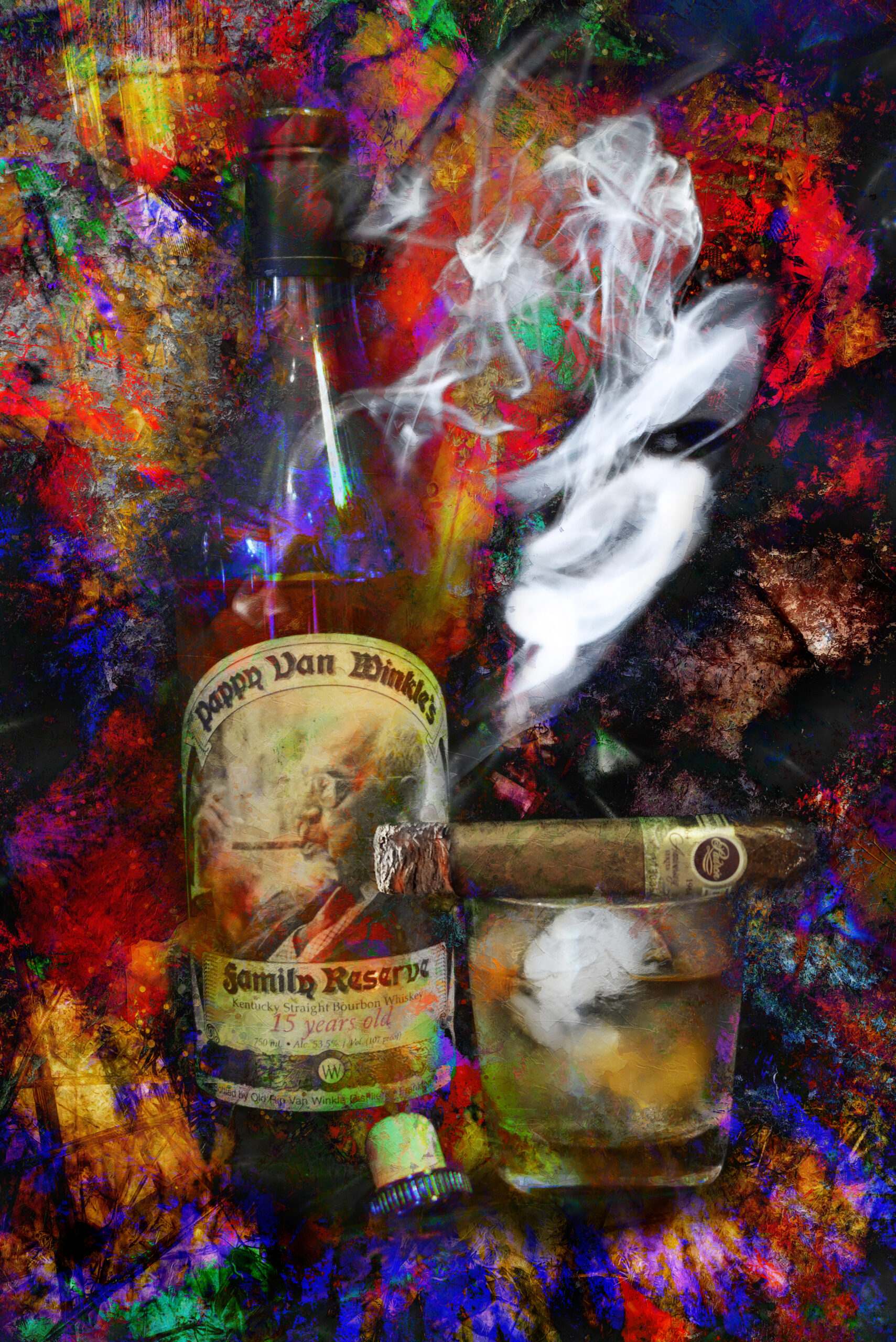Limited Edition Bourbon Art: Why Collectors Are Gathering to Unique Finds
Wiki Article
The Relevance of Whiskey Art in Celebrating Heritage and Workmanship in the Beverage Sector
The detailed connection in between bourbon art and the party of heritage and craftsmanship within the drink sector can not be overemphasized. Via attentively developed containers and tags, scotch brands encapsulate their historic roots and the artisanal abilities that define their production approaches. This imaginative dimension not only boosts market charm however additionally functions as an avenue for cultural narration, cultivating a much deeper connection between the customer and the craft. As we discover the various facets of this subject, interesting concerns regarding the influence of contemporary patterns on traditional practices occur, prompting further examination.The Historical Roots of Whiskey
At the heart of bourbon's attraction lies a rich tapestry of historic origins that map back to ancient worlds. The beginnings of whiskey can be linked to the purification methods of the Sumerians and Babylonians around 2000 BCE, where very early types of fermented grain drinks began to arise. It was in the Middle Ages that the art of distillation developed significantly, specifically in Ireland and Scotland, leading to the development of scotch as we recognize it today.
The term "bourbon" itself stems from the Gaelic word "uisce beatha," indicating "water of life." This expression underscores the cultural importance of bourbon in Celtic cultures, where it was typically related to routines, celebrations, and public bonding. By the 15th century, purification came to be an identified craft within reclusive communities, leading the way for the establishment of lawful distilleries.
As trade courses increased, scotch's appeal grew, transcending regional boundaries and catching the interest of connoisseurs worldwide. Bourbon Art. This historical journey reflects not just the workmanship behind scotch production however also its essential duty in social and cultural contexts, noting it as a considerable beverage throughout background
Artistic Expression in Branding
Whiskey branding stands as an engaging intersection of virtuosity and commerce, where aesthetic identification plays an essential duty fit customer perception. The aesthetics of bourbon labels, packaging, and advertising and marketing products reflect not only the brand's tale however also its core worths and heritage. Via imaginative expression, distilleries communicate a narrative that resonates with customers, evoking emotions and sparking connections.Making use of shade, typography, and images in branding offers to distinguish products in a saturated market. Conventional concepts may stimulate a feeling of credibility and workmanship, while contemporary designs can signify advancement and forward-thinking. This strategic creative instructions improves brand name acknowledgment and commitment, enabling consumers to create a personal relationship with the scotch they select.
Furthermore, creative expression in branding typically works as a party of local heritage. Distilleries frequently incorporate local symbols or historic referrals into their styles, developing a feeling of place that invites customers to partake in a broader social experience. Inevitably, the artistry behind scotch branding not only enhances aesthetic allure yet also enriches the general narrative of the brand name, promoting a much deeper admiration for the workmanship and heritage embedded in each container.
Workmanship in Bottle Layout
The virtuosity apparent in bourbon branding extends past aesthetic identity to include the workmanship included in container layout. Each container functions as a vessel not just for the spirit within, but likewise for the story it tells concerning its top quality, tradition, and origin. The layout process needs meticulous focus to information, as aspects such as closure, shape, and material add dramatically to the overall perception of the whiskey.Craftsmanship in bottle layout includes selecting premium glass that can enhance the bourbon's color and clarity, while also providing a responsive experience for the customer. The silhouette of the bottle should be both practical and cosmetically appealing, usually showing the heritage of the brand. Lots of distilleries choose unique forms or printed logo designs that evoke a sense of credibility and history.
Additionally, the tag layout and typography play an important duty in connecting the brand name's story. Realism Art. A well-crafted bottle not only captivates the consumer's eye yet also reinforces the brand name's dedication to high quality and tradition. This way, the craftsmanship of container design ends up being a vital aspect of the scotch experience, combining creativity with an extensive regard for heritage
Cultural Value of Whiskey Art
Celebrating tradition and craftsmanship, the cultural value of whiskey art transcends plain aesthetics, intertwining with the Realism Art social and historic narratives of the regions from which it stems. Each bottle works as a canvas, illustrating the special stories, folklore, and customs that have actually shaped local whiskey-making practices. The detailed styles frequently show the heritage of the distillers, incorporating icons and motifs that resonate with the society and values of their communities.
In enhancement, bourbon art plays an essential function in communal gatherings and celebrations, acting as a concrete link in between people and their shared experiences. By valuing the creativity in bourbon product packaging, consumers grow a much deeper understanding and respect for the craft, ultimately improving their enjoyment of the beverage itself.
Modern Trends in Whiskey Presentation
In the last few years, the discussion of bourbon has evolved to reflect modern preferences and fads while still recognizing standard workmanship - Whiskey Art. Distilleries are increasingly concentrating on visual elements that improve the overall alcohol consumption experience, bridging the space in between heritage and modernityCutting-edge container designs have actually arised, commonly including sustainable materials and artistic labels that inform engaging stories. Several brand names now work together with local artists, instilling their items with special aesthetic expressions that reverberate with consumers. Furthermore, limited-edition releases are often packaged in collectible containers, adding value and allure for connoisseurs.

Verdict
In conclusion, bourbon art serves as an important avenue for revealing the heritage and workmanship fundamental in the drink sector. With complex branding, innovative bottle layouts, and culturally significant imaginative components, whiskey brands successfully recognize their customs and attach with customers.

Workmanship in container style entails selecting top quality glass that can boost the scotch's color and clearness, while additionally offering a tactile experience for the consumer. In this means, the craftsmanship of container layout becomes a vital element of the scotch experience, merging artistry with an extensive respect for heritage.
In conclusion, whiskey art offers as a crucial channel for sharing the heritage and craftsmanship inherent in the drink sector.
Report this wiki page